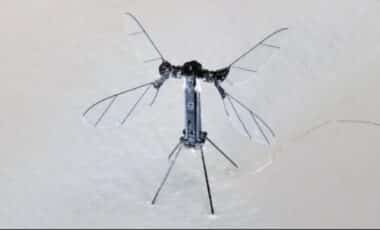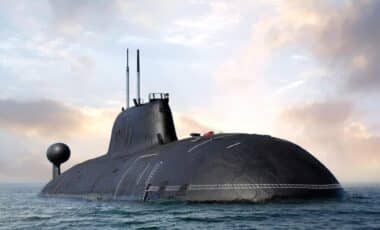Being there . . . . from the gargantuan Battle of Stalingrad to the Japanese naval base in the Truk Islands of the Pacific and their overhead ack-ack filled skies . . .
Four New Books from Osprey Publishing Portend a Kaleidoscopic List of Titles For 2022
Reviewed and Highly Recommended by Don DeNevi
Perusing the company’s list of forthcoming World War II books currently being printed, and soon to be submitted for publication, to say nothing of those in similar stages of designing, researching, and writing at rival military publishing houses, i.e., Casemate, Schiffer, Naval Institute, and McFarland, all as legendary as Osprey, this new year promises to be banner.
For decades, scarcity of disciplined, sound research and writing and its texts of battles, victories, defeats, heroes, and home front production and activities, has rendered dear with readers. During those lean years of good Second World War literature, appetite grew with the little feeding available.
Today, amid the plenitude and plethora of WWII topics and subjects, nouns such “hodgepodge”, “medley”, and “potpourri” are ignorant of The Five’s efforts. The four following books are exemplary of their company’s honest quality, no-nonsense publishing integrity approaches to print and distribute war literature that brings history to life. For this, those five have won the respect and appreciation of readers everywhere.
Below is a bare smidgen of titles in Osprey’s kaleidoscopic, endless variety of varicolored topics, variegated, among all the changing scenes.
“STALINGRAD 1942-43 (2) – – The Fight for the City”, by Robert Forczyk, Illustrated by Steve Noon. Osprey: Campaign, 368; 96 pages, sc; $24. Volume 1 was published in 2021, CAM 359.
This superlative Volume 2 of Forczyk’s two volume set records the titanic battle which led to the destruction of the Sixth Army. The heavy losses sustained by the German army make it arguably the turning point of World War II. Over one million men and women, military and civilian died in the raging firestorm that lasted from September of 1942 and late January of 1942. The team of Forczyk and Noon vividly recreate, virtually day by day, the entire battle with photos, maps, drawings, etc. A reader can almost smell the stench of thousands of corpses lying in the rubble. As late as the 1990s, it was said tourists could still find pieces of German bones in the fields outside Stalingrad. For 100 pages, it is unquestionably the finest designed, best written summaries yet compiled on the tremendous struggle where the SS penetrated the downtown area in the city to within a block or two of the Volga River, and yet lost the battle.
“TRUK 1944-45 – The Destruction of Japan’s Central Pacific Bastionz”, by Mark Lardas, Illustrated by Adam Tooby. Osprey: Air Campaign, 96 pages, sc; $24.
By early 1944, Truk blocked the Allied advance to Tokyo. Invasion was too costly. It was decided by the US Navy to neutralize the islands with naval airpower alone, making use of the increasingly powerful Essex-class carrier fleet. In the huge raids of Operation Hailstone, the aircraft from nine carriers reduced Truk to rubble. Yet, another excellent Osprey book, this one examining the rise and fall of Truk as a Japanese bastion and explains the irresistible combination of late-war airpower that destroyed it.
“B-25 MITCHELL vs JAPANESE DESTROYERS – Battle of the Bismarck Sea”, by Mark Lardas. Osprey: Duel, Engage the Enemy Series; 80 pages, sc; $22.
Development of the “gun” bomber armed with eight fixed forward-firing heavy machine guns and skip bombing technique by the Fifth Air Force in Southeast Asia flipped the momentum of the war in the Pacific. It finally gave US aircraft an effective mean of attacking nimble, fast-moving Japanese destroyers, tasked with protecting their convoys. Lardas, one of the truly informed experts on not only enemy aircraft encountered by Allied pilots, but also complicated, advanced Japanese aviation strategies, provides readers with eye-popping, hair-raising, stomach-turning accounts of attacking Japanese fighting shipping. This is one of the better “Duel, Engage the Enemy Series” narrations.
“DESPERATE SUNSET – Japan’s Kamikazes Against Allied Ships, 1944-1945”, by Mike Yeo. Osprey: 352 pages, hc; $45.
By mid-1944, Allied attacks had shredded the ranks of the Japanese air corps, leaving them with a lack of skilled, experienced airmen able to effectively attack enemy vessels. Hence, there was an immediate need to create the “Tokubetsu Kogekitai”, the Special Attack Units which would become immortalized as the infamous “kamikaze”. This well-designed book, filled Japanese aircraft designs, photographs, maps, etc., is a must for anyone interested in the Pacific War. Mike Yeo, a Singaporean based in Melbourne for “The Defense News” and “Asia-Pacific Defense Reporter”, has gifted military readers with a most fascinating full account of the birth, growth, development, and death of the feared kamikaze from the Japanese perspective, a rarity in the war literature of the war in the Pacific.
For additional Osprey books recently published, see www.ospreypublishing.com








